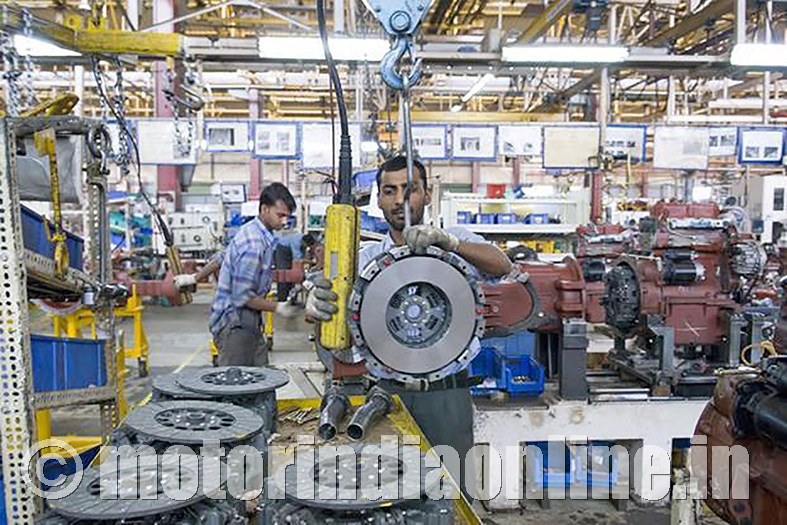India’s auto component industry, which has a sizeable unorganised sector, is intensely competitive. New product launches, Government support, steady aftermarket and global demands are driving growth for auto component players despite competition from China and Thailand. Significant improvements in quality have helped meet the requirements of the increasingly quality-conscious Indian consumers.

However, if the auto component players are aware of the export incentives and benefits, they can optimize their growth at a much faster pace.
The following are a few export benefits, as mentioned under the Foreign Trade Policy (FTP) of the Government that will help auto component players expand their business:
Duty-Free Replenishment Certificate (DFRC): Mid-level auto component suppliers are granted export benefits on products against their DFRC which is issued to a merchant-exporter or manufacturer-exporter for import of inputs used in the manufacture of goods without payment of basic customs duty and special additional duty. However, such inputs shall be subjected to payment of additional customs duty equal to the excise duty at the time of import. DFRC shall be issued only in respect of export products covered under the Standard Input Output Norms (SIONs) as notified by the Director General Foreign Trade (DGFT).
Export Promotion Capital Goods (EPCG) Scheme: Companies or investors can also receive incentives for the EPCG scheme. The scheme allows import of capital goods, including spares for pre-production, production and post-production at zero duty, subject to an export obligation of six times of duty saved on capital goods imported under the EPCG scheme, to be fulfilled in six years reckoned from the authorisation issue date.
The scheme covers manufacturer-exporters with or without supporting the manufacturer / vendor, merchant exporters tied to supporting manufacturer(s) and service providers. The scheme also covers a service provider who is designated / certified as a common service provider (CSP). An EPCG authorisation holder can export either directly or through third party.
The export proceeds are to be realized in freely convertible currency, except for deemed exports. Capital goods imported under the EPCG scheme shall be subject to actual user condition till the export obligation is completed.
Duty Remission Schemes: Any industry player must be aware of such schemes. Duty exemption schemes enable duty-free import of inputs required for export production. An advance licence is issued as part of a duty exemption scheme that enables post-export replenishment / remission of duty on inputs used in the export product. Duty remission schemes consist of DFRC (Duty Free Replenishment Certificate) and DEPB (Duty Entitlement Passbook Scheme).
DFRC permits duty-free replenishment of inputs used in the export product, while DEPB allows drawback of import charges on inputs used in the export product.
Merchandise Exports from India Scheme (MEIS): The Government has introduced the Merchandise Exports from India Scheme (MEIS) through the Foreign Trade Policy (FTP) 2015-20 with effect from April 1, 2015. It seeks to promote export of notified goods manufactured / produced in India. MEIS is a major export promotion Government scheme implemented by the Ministry of Commerce and Industry.
Earlier, there were five different schemes for rewarding merchandise exports with different kinds of duty scrips with varying conditions attached to their use. Now all these schemes have been merged into a single one, namely, the Merchandise Exports from India Scheme (MEIS).
Rewards under MEIS are payable as a percentage (2, 3 or 5%) of the realized free on board (FOB) value of covered exports, by way of the MEIS duty credit scrip. The scrip can be transferred or used for payment of a number of duties / taxes, including the customs / excise duty / service tax. Scrips and inputs imported under the scrips are fully transferable. This has provided much flexibility to exporters. Earlier schemes had many conditions attached with the scrips about their usage and importability of items.
Besides, the recent revision in the trade policy has added 46 products, including 23 auto parts, to the market-linked focused product scheme. These include locks, pistons, piston rings, oil filters, gearboxes and headlamps. The addition of more auto parts in the so-called market-linked focused product scheme under FTP will incentivize their exports to Brazil, Iran, Russia, China and South Africa.
To conclude, the industry is all set to leapfrog, with an expected growth rate of 13-15 per cent in FY18, with robust progression in domestic passenger vehicle, commercial vehicle, tractor and two-wheeler segments.
By Oleksandr Danylenko, Co-founder and Director of Operations and Finance, boodmo
